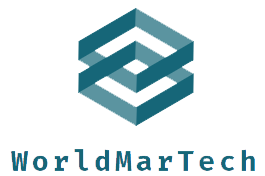How to Turn Virtual Teams into Tight-Knit Communities: Radha Agrawal’s Proven Tips
Our master this week once led 40,000 people in one massive virtual dance party for Oprah. (Oprah!)
As someone whose dance moves resemble a malfunctioning robot, I’ll admit that the concept sounded incredibly awkward to me. But watching the vids made me realize Agrawal is onto something: People are desperate for connection.
Radha Agrawal is a community architect, public speaker, and entrepreneur, and she helps businesses (like Meta, Nike, and Campbell’s) create stronger communities within their workplaces. She’s also the founder of DAYBREAKER, a morning dance party in 33 cities around the world.
Let’s jump into her three tips for cultivating a community of your own.
How to Master the Art of Building a Thriving Community
1. You need a community architect. (And no, not the intern.)
Before you scoff at a big ol‘ fluff post on “community” and “friendship,” let’s take a good hard look at some numbers:
In 2023, only one-third of employees were engaged in their work
Disengaged employees account for $1.9 trillion in lost productivity
92% of execs say that high engagement = happier customers
Or, consider a personal example: I met my best friend, Kristen, in-office a few years ago. She‘s now a bridesmaid in my wedding, and I told Radha I’d turn down a job elsewhere even if I was offered $20K more because I’d much rather continue my weekly tradition of working gossiping in the coffee garden at HQ with Kristen.
Community has the power to keep employees happy, engaged, and willing to go above-and-beyond to keep the cash a-flowing for your business.
To cultivate a community, you have to prioritize it.
“You need to hire a community architect — and I don’t mean tasking the newbie intern with the job,” Agrawal told me. “Your chief community officer should be brought in with the same level of seriousness as a chief marketing officer or chief executive officer.”
Once you‘ve got your CCO, you’ll want that person to sit down with the head of each department to understand the needs behind each role.
“In a disaggregated work-at-home environment, it’s hard to build a sense of camaraderie and loyalty inside a company without first understanding who the humans are behind each department. You’ll need to know the miniature ecosystems inside the company, and bring them all into one cohesive value alignment,” Agrawal says.
2. Work is not just for churnin’ and burnin’.
Agrawal acknowledges that loneliness exists at every level — whether you’re a CEO, middle manager, or the new intern.
And Agrawal wholeheartedly believes work can be a solution to that loneliness. In fact, she met her own husband in an office.
“It’s important to remember that workspaces aren’t just spaces for churning and burning. They’re spaces to socialize, and it’s where you actually achieve and receive your social connections the most.”
Agrawal believes it‘s a leader’s responsibility to figure out how each person on her team wants to socialize.
For instance, she’s interested in the newbies on her own team: “I, as a founder of my company, want to understand and learn what the youngest team members on my team want. What do they need? How do they socialize? How can I support them in their camaraderie? That level of curiosity is so important inside of a team.”
My own socializing preferences? Two words: Margarita night.
3. Off-sites, off-sites, off-sites.
In the midst of the pandemic, I remember all too well the awkward attempts at connection.
Zoom happy hours. Remote scavenger hunts. Virtual trivia.
The effort was nice, but it wasn’t nearly as powerful as the one company off-site HubSpot hosted last March (which resulted in a team-outing to a karaoke bar, where we brought the house down with a moving rendition of Celine Dion’s My Heart Will Go On).
Agrawal emphasizes the importance of doing company off-sites as a chance to keep employees motivated and engaged. She also encourages more consistent in-person events if possible.
“The important part is to give it a name and give it a cadence. There’s a sense of belonging you’re creating when you consider energy and intentionality and space.”
Agrawal provided me with a few examples: Maybe your company hosts a monthly poker night, or creates a roller-skating team who roller-skate in silly costumes once per quarter.
If having everyone in-person isn’t an option, can you encourage mini meet-ups in various cities? And if not, how can you make virtual connections easier to make?
The easiest solution is to ask your employees: What would make them feel more excited to turn up to work each morning?
“Too often we think of community building just as butts-in-seats, but not as actually humans, with thinking, feeling souls.”
Remember, those thinking, feeling souls can account for almost $2 trillion in lost productivity — treat them like humans, and you could be shocked by how it sways the bottom-line.

